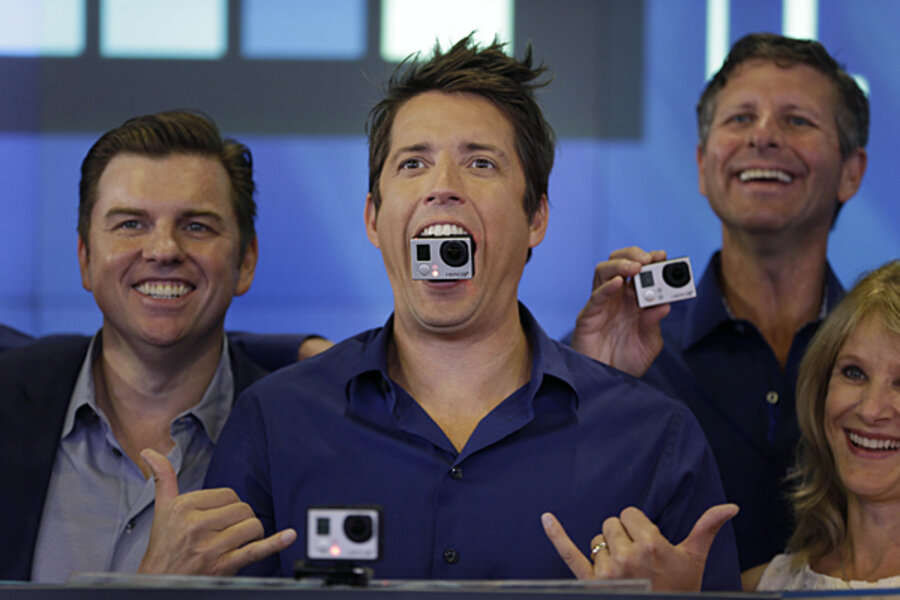GoPro (GPRO) stock goes on a rollercoaster. Should you buy?
Loading...
GoPro, the popular wearable camera company, has found its biggest fan – Wall Street.
On Wednesday, its fifth day of trading, the price of GoPro (GPRO) stock had jumped 75 percent from its initial price to $42.04 a share. But that was down from its Tuesday peak – shares dipped 13 percent by the end of the day Wednesday.
On June 26, GoPro released its stock at $24 a share, which was on the higher end of its price band. The initial price helped the the San Mateo, Calif. based company raise $427 million, making it the largest stock offering by a consumer electronics company in 23 years.
So what's behind the rise of the GoPro IPO?
Charlie Anderson, an analyst with Dougherty & Co., told Monitor that part of the reason GoPro is doing so well is because that type of stock is so rare.
"[GoPro] is a consumer electronic product, and we don't see many consumer electronic product IPOs," Mr. Anderson says. The benefit in these types of companies, he believes, is that they are selling a tangible product that are easy for investors to get behind.
Another reason: The company has only sold 18 million of its 123 million shares. Because the amount of shares was so small, institutional investors, who like to have a large stake in companies, had a hard time buying up all of the shares they wanted.
"It was a very tight deal," Mr. Anderson said. "[Investors] probably didn't get as much stock as they wanted." Now these investors are looking to buy up more stock so they can have a bigger part of a company with a bright future.
GoPro History
The idea for GoPro began in 2001, when now-CEO Nick Woodman began to develop a strap that would secure his camera while he surfed. After three years of research, Mr. Woodman started GoPro in September 2004. At the time, GoPro cameras were 35-mm cameras in a waterproof case. In 2006, GoPro cameras went digital, and then in 2010, high definition cameras were released.
Since its 2004, the company has become extremely popular with those looking to record their adventures. In 2013, the GoPro sold 3.8 million cameras and users uploaded almost three years' worth of video. Mr. Anderson believes the next step for GoPro is a media business, like Red Bull Media or Vevo, which he says could be a big moneymaker.
"It is very clear that they have a substantial viewership," Mr. Anderson said. GoPro's YouTube channel already gets around three million views a day. "Big brands will want to advertise on a GoPro channel."
After its blistering start, GoPro has cooled somewhat heading into Independence Day weekend. Short sellers finally got their turn at the stock Wednesday, sending the price down nearly 14 percent. Still, the company was trading at $42 per share at the start of the day Thursday.






